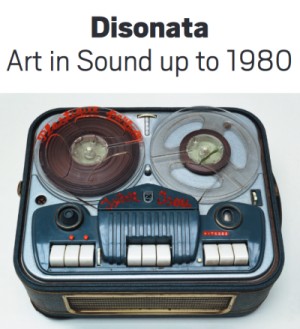23 September, 2020 - 01 March, 2021
Museo National Centro de Arte Reina Sofia
Sabatini Building, Floor 3
Calle Santa Isabel, 52
28012 Madrid
Spain
More than a hundred years ago, pioneers from various directions set out on expeditions into the hitherto unexplored realms of sonic phenomena and processes, previously the exclusive domaine of musicians. Driving force was the visual artists, but also visionary poets and musicians, even architects and engineers. Leaving all corsets of rules behind, everything in this context was worth exploring: all possible notations (even directly on a record or ephemeral traces in sand), all types of making sound (even by machines or dogs), all forms of staging (even in a desert or completely drunk), and of course all acoustic effects (even silence or ear-splitting crashes). It was a liberation of sounds and a liberation of thinking. A reality broke through, pulsating with life, which enlarged and simultaneously shattered the well-defined harmony of allegedly superior forms and styles of the established Western music system which had lost contact with the modern world.
Disonata spans the period fromthe late 19th century with the first silent pieces and the transformations by the Futurists and Dada in the light of the technological and ideological revolutions until the No Future attitudes of the post-punk scenes in the 1980s. Between these two poles unfold a wide range of very diverse projects. They include the Philips Pavilion from 1958 with its spatial multimedia spectacle as well as a multitude of sound projects with explicit or loose links to groups and movements such as Lettrism, sound and visual poetry, Art Brut, CoBrA, kinetic art, New Realism, Fluxus, Zaj, Conceptual Art, and Pop Art. Their approaches range from corporal noises to electronic synthetizations, from optophonic poetry to technical inventions, from pure ideas to multimedia events, from intimate encounters to spatial multimedia compositions. A chronological approach lives up to the polyphonic riches of the unique sound projects which transcend pre-formulated definitions, themes or narratives. Main- and subsidiary paths within the general timeline reveal relations and overlaps, but also discontinuities. Within resonate the individual nuances of the sounds which are of an essentially unclassifiable nature. In this sense, the exhibition can be understood as a veritable disonata: a composition which reflects, extends and surpasses canonical forms of art in sound. It sets the sounds free to resonate in full variety between us and the space. Receiving them with open ears and eyes, we will realize that we perceive and interpret our world to a very large extent acoustically, probably even more than visually.
Artists: Alphonse Allais, Erik Satie, Erwin Schulhoff, Filippo Tommaso Marinetti, Francesco Balilla Pratella, Luigi Russolo, Dziga Vertov, Hugo Ball, Raoul Hausmann, Marcel Duchamp, Kurt Schwitters, Man Ray, Alexander Calder, Pierre Schaeffer, Edgard Varèse, Le Corbusier, Iannis Xenakis, Isodore Isou, Maurice Lemaître, Jean Dubuffet, Asger Jorn, Karel Appel, Pol Bury, Brion Gysin, François Dufrêne, Henri Chopin, Ilse Garnier, Françoise Janicot, Bernard Heidsieck, Mimmo Rotella, Katalin Ladik, Guy Schraenen, François and Bernard Baschet, Yves Tinguely, George Brecht, Dick Higgins, Yoko Ono, Nam June Paik, Mieko Shiomi, Joe Jones, Robert Filliou, La Monte Young, George Maciunas, Tadeuz Kantor, Walter Marchetti, Juan Hidalgo, José Luis Castillejo, Esther Ferrer, Dieter Roth, Joseph Beuys, Vladan Radovanović, Józef Robakowski, Chris Burden, Robert Morris, Ulises Carrión, Hanne Darboven, Andy Warhol, Dan Graham, Mike Kelley, Raymond Pettibon and more.
The exhibition was originally a project by Guy Schraenen. After his death in 2018, Maike Aden was asked to continue it.



 Druckversion
Druckversion Seite weiterempfehlen
Seite weiterempfehlen